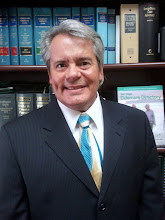Fallbrook Hospital District Skilled Nursing Facility, located in San Diego County, has received the most severe penalty under California law that long-term nursing facilities can receive. An investigation by the California Department of Public Health (CDPH) revealed that inadequate care had led to the death of a male nursing home resident last summer.
Fallbrook received an "AA" citation and was fined $90,000 by the CDPH. The CDPH is responsible for issuing citations and fines when nursing homes are found to be providing inadequate or negligent care of their residents. The CDPH has three different categories for citations and fines, with the "AA" citation being the harshest penalty. The categories are as follows:
- Class AA: $25,000 to $100,000 fine
- Class A: $2,000 to $20,000 fine
- Class B: $100 to $1,000 fine
According to CDPH's site, an "AA" citation is defined as "a violation that has been 'determined to have been a direct proximate cause of death of a patient or resident of a long term care facility.'" To enforce an AA citation, the CDPH must prove (1) the violation was a direct proximate cause of death and (2) the death resulted from an occurrence that the regulation was designed to prevent.
According to California Healthcare Foundation's (CHF) site, Fallbrook is located in Fallbrook city in San Diego County. The facility accepts Medicare and Medi-Cal and it has a total of 93 beds. On CHF's site, Fallbrook received a below average rating for the number of hours staff devote to each resident per day. The facility also received a below average rating for the "complaints" category, and as for the "quality of care" category, CHF noted that eight percent of Fallbrook residents spend most of their time in bed, whereas the State's average was five percent.
In this particular instance, the director of CDPH, Mark Horton, stated that Fallbrook failed to initiate a plan to prevent the resident's risk of injury. The male resident was listed as having a high risk of falling. When the resident did fall, he broke his leg and he subsequently died of complications resulting from the surgery to his leg.
Federal Nursing Home Laws
Nursing homes that participate in Medicare and Medicaid programs must comply with federal rules regarding the type of care residents should receive. Under Title 42 CFR Section 483.20, nursing homes must conduct initial and periodic assessments of each resident's functional capacity. The assessment must include a review of the resident's cognitive patterns, communication, psychosocial well-being, physical functioning, and medications among other factors.
Title 42 CFR Section 483.25 also states that each resident must receive and the nursing facility must provide "the highest practicable physical, mental, and psycho-social well-being" for residents, in accordance with the assessment of the patient's needs and plan of care. It appears that in this situation, Fallbrook failed to take the necessary measures to ensure that the resident would be safe and not susceptible to injury.
When nursing home management and staff fail to abide by federal and state rules, the risk of serious injuries and deaths of nursing home residents are considerable. It is imperative that families, who are trying to find the right nursing facility for their loved ones, research and visit facilities before making their final decision.
Unfortunately though, incidents of nursing home abuse and neglect do occur. If you or someone you know has been the victim of nursing home abuse or negligence, contact the Casiano Law Firm for a confidential consultation to discuss your case.

